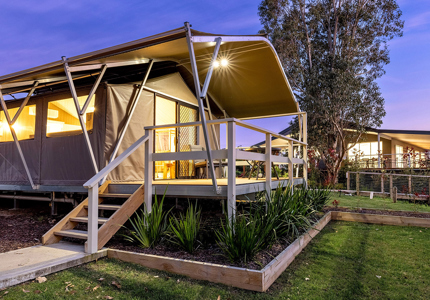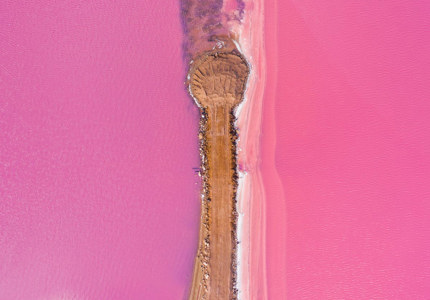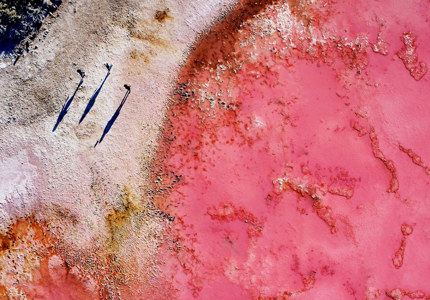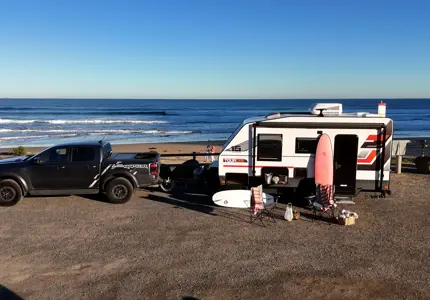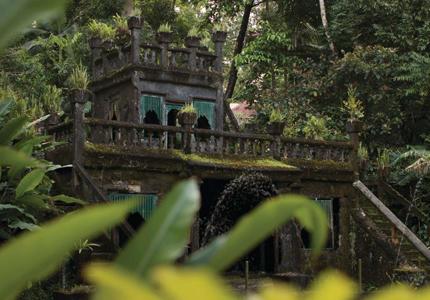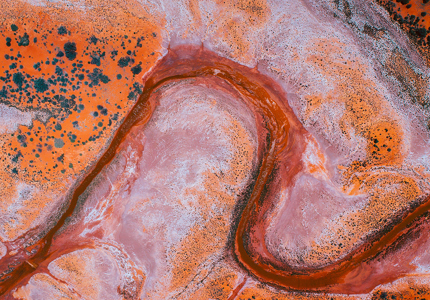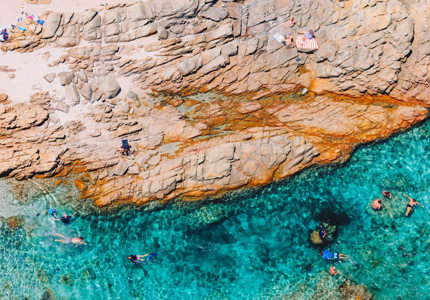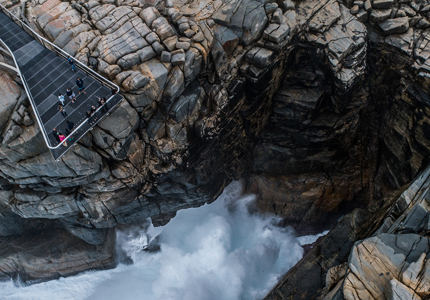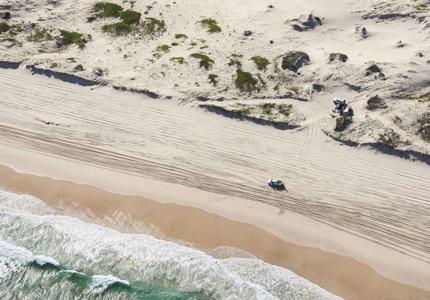Shipwrecks of the Coast
Nature & Parks
Ledge Point is well known for being the town where the Shipwreck Vergulde Draeck (Gilt Dragon) was discovered in 1963. Along the Coastline, between a location called Wreck Point and Lancelin/Wedge Island, a total of 14 Shipwrecks have been found spanning over 330 years of history. Most of these wrecks are accessible by boat and some offer spectacular diving sites.
The oldest Shipwreck, being the 'Gilt Dragon' wrecked in 1656 and the most recent being the sinking of the jack-up oil rig 'Key Biscayne' in 1983. The closeby town of Guilderton is named after the Dutch Guilders found in Sand Dunes neaby. The keys and skeleton found with them are from the shipwreck 'Gilt Dragon'. The Shipwreck is situated at the mouth of the Moore River, 90km North of Perth and 48 km West of Gingin. Ledge Point is thought to be named by J.W Gregory during his 1847-1848 survey of the Western Australia Coast in the Schooner Thetis. Lancelin, which is approximately 15km North of Ledge Point and the larger Town along the coastline is well known for its beaches and windsurfing opportunities. Since the 1950's, these towns along the Coastline have all grown from clusters of FIsherman's huts to thriving tourist destinations. The following wrecks are accessible by boat and some offer spectacular diving sites:
VERGULDE DRAECK - 1656
The Dutch East India Company (VOC) ship Vergulde Draeck, popularly known as the Gilt Dragon, was on a trading voyage to Batavia (now Jakarta) with a crew of approximately 193 men, a cargo of trade goods worth 106,400 guilders and eight chests of silver coins to the value of 78,600 guilders when disaster struck.
In the early morning of 28 April 1656, the vessel struck a reef off the coast, about mid-way between what is now Seabird and Ledge Point. Within minutes the ship began to breakup. Two boats were launched but only 75 crew reached the shore with a few of the provisions and stores. The ship's Master Pieter Albertz ordered seven of the crew to sail to Batavia for assistance while he and the remainder of the crew waited ashore. Forty-one days later two vessels set sail from Batavia in search of the survivors. Several other expeditions were mounted in the following year but all failed to find any of the missing crew, although some wreckage was noted in the region of Fremantle.
The wreck was found on 14 April 1963 by a party of divers. It lies on a reef, 5.6 km from shore and 12 km. south-south-west of Ledge Point. It is an excellent dive site in calm conditions.
EMILY – 1868
The Emily was a 40 tonne schooner-rigged vessel with two masts. It was built in Fremantle as a coastal trader and was launched in April 1868. Before the Emily had completed her maiden voyage between Fremantle and Port Irwin, now known as Dongara and had sailed again for Irwin. On 13 June the Emily set out on the return voyage to Fremantle with a crew of four and a cargo of copper ore, but during the night a gale blew in from the North-West and the schooner was driven ashore. Pieces of the wreck were found on the beaches of Rottnest Island but the location of the Emily was not discovered for two more months, when the hull was found on a beach just South of the small town of Two Rocks at a site known as Wreck Point. The wreck lay partly covered in sand with some of the cargo or copper ore still in the hull. Over the years, the wreck was forgotten and its location is now unknown.
SEABIRD- 1874
The 40 tonne two – master Seabird was built in 1865 at the Vasse River (now Busselton). On June 11 1874 the Seabird left Fremantle heading in a northerly direction. Aboard the vessel was general cargo and 10 passengers of which the majority consisted on ticket – of – leave men (prisoners on parole). By the 13th the weather had turned foul. For 2 days Captain Hanham battled to keep the ship out to sea. Gale force winds finally forced him to seek shelter behind a reef 5km from the shore, where the ship was anchored for the night. The following day the wind shifted to the north-west and dragged, allowing the Seabird to come dangerously close to the reef. Hanham slipped the mooring chains overboard and ran the Seabird ashore, where it became stranded, approximately 9km north of the Moore River. While the Captain and crew camped near the stricken vessel, the passengers trekked north, believing they were just South of Geraldton. After a long and difficult journey, the two fittest men reached Dongara to raise the alarm. The initial inquiry found Captain Hanham guilty of negligence. The wreck was auctioned at Gingin and the cargo salvaged.
The location of the wreck has not been identified, however 1.5km south of the town of Seabird lies the remains of a small vessel that may just be the Seabird which lays in the breakers on a flat reed a few metres from the shore.
OLEANDER – 1884
The 347 tonne wooden barque Oleander was built in 1871 and was lost thirteen years later on a voyage from Shark Bay to Fremantle. The vessel had run aground three times at Shark Bay while loading guano for Hamburg, with no apparent damage. On 5 February she started to leak heavily, however he ships captain believed that the ships pump could cope and Oleander would reach Fremantle. Three weeks later a storm blew up and the leak increased. The crew was finally forced to abandon the ship about 56km to the west of Lancelin. The location of the Oleander is unknown.
GRACE DARLING - 1914
The Grace Darling was a wooden two-masted schooner built in Hobart, Tasmania in 1869. The 83 Tonne vessel was wrecked in February 1914 while on voyage from the Abrolhos Islands to Fremantle with a cargo of 1,000 bags of guano. The crew of six was saved.
The wreck site is about one kilometer to the North of Lancelin Island at 800m from the shore, on a line of reef close to the entrance of the Lancelin fishing boat anchorage. Wreckage lies on the reef and in sand holes in depth from three to six metres. The hull is not in tact but large sections can be seen.
SEAFLOWER - 1923
The 53 Tonne wooden schooner was lost on 19 September 1923, in the same area as the Seabird. The Seaflower was bound for Fremantle with a cargo of whale oil and guano from the North West Whale Company at Point Cloates when it was wrecked approximately 14km north of the mouth of the Moore River. The vessel capsized in mountainous seas, tossing the crew of five overboard. All but one man drowned and the lone survivor endured a 16km walk to reach safety at a farm near Gingin. The Seaflower is believed to have foundered on one of the many offshore reefs, where it could have broken up and the pieces drifted into shore.
The confusion between the wreck site of the Seabird and the Seaflower may never be resolved, as the size, tonnage and style of the vessels is similar.
VILLALTA - 1896
The Villalta left Tacoma (U.S.A.) for Fremantle on 9 November 1896 with a crew of 18 men and a cargo of Oregon pine. The steel barque of 880 tonnes was running at about 6 knots (10 km per hour) when it hit the Leschenault Reef, 7 km south of Seabird. With the ship in danger of breaking up in the heavy seas, lifeboats were launched, but within minutes it capsized and Captain Harland and an apprentice were lost. Eventually the 16 survivors reached shore. Some time later the Villalta shifted her position. The ship slid off the Leschenault Reef and was eventually beached 3 km south of Seabird. A wreck now believed to be theVillalta lies scattered over a wide area and is partially buried in sand. The wreck is 100 m from the shore and is easily accessible to snorkel divers. At the northern end of the site, section of hull protrudes from the water.
VILLE DE ROUEN - 1901
The Ville de Rouen was a steel-hulled 1143-tonne barque built in St Nazare, France in 1891. 71e ship was sailing from Cardiff bound for the Fremantle Works with 1,300 tonnes of coke and pig iron, 25,000 fire-bricks and 1,600 bottles of wine aboard. On 28 October 1901 a combination of strong currents and poor visibility caused the vessel to run aground 1.2 kilometres to the north of its present location. By the next day the stricken ship had bumped across the reef and drifted to its present position. The Captain and crew made no attempt to save the ship, preferring to sample the cargo of wine from the safety of the shore as they watched the ship break up.
The wreck is located approximately 5.5 km offshore from the Moore River just inside of the Ville de Rouen Reef. Wreckage lies scattered over a distance of 87metres, at a depth of 7-9 m on a reef bottom surrounded by sand. It is covered in most areas by weed growth but is still largely intact and identifiable, making it an attractive dive site. An anchor from the V71h de Rouen is on display outside the Guilderton Country Club.
SS VENUS - 1923
The SS Venus was built in Fremantle in 1897. It was a wooden sailing steamer of 63 tonnes. The vessel was bound from Fremantle to the Abrolhos Islands for the cray fishing season when it was driven ashore during a storm on 21 August 1923, 8 km north of Seabird. Of the 6 crew, 2 men drowned. Efforts to salvage the vessel were unsuccessful. The wreck lies bows-on to the beach with the boiler visible at low tide, protruding from the water about eight metres offshore. Most of the wreckage is buried in the seabed and only becomes visible after storms have scoured away some of the sand.
LINDA – 1950S
The Linda, a Fairmile bound for whaling in the north-west was wrecked on Linda Reef, south of the Moore River mouth. Although the exact date is unknown, it is presumed it went down in the 1950s. The exact number of crew is also unknown but two men died and a small dog survived. One of the two engines and some fittings were salvaged.
JP WEBB – 1951
The 983-tonne steam-driven hopper barge, JP Webb was lost en route from England to Melbourne. The 983-tonne barge had been built in Glasgow for the Melbourne Harbour Trust and was designed for dredging work in Port Phillip Bay, Victoria. The ill-fated vessel was launched in April 1951, only to run aground four months later on what is now known as Webb Reef. It lies 1.6 km west of Ledge point at a depth of 3-6 metres. The main features of the wreck are the boiler and a large triple expansion steam engine. The boiler is clearly visible from the surface, lying about one metre below the water. The site has been extensively salvaged but remains an attractive and easily accessible dive in good condition.
KEY BISCAYNE - 1983
The 2738-tonne jack-up oil rig Key Biscayne capsized during a violent storm while under tow from the Northern Territory to Fremantle. At the height of the storm the tow lines broke and the rig began to list dangerously. It was due to the skill and bravery of the rescue helicopter pilots that all 52 crew members were saved before the rig finally sank. It now lies approximately 19 km north-west of Ledge Point. The rig lies upside down with the bottom of its platform in 20 metres of water sloping up from south to north. The legs of the rig lie on the sea floor on a north/ south axis at a depth of 40 metres. This is a spectacular dive site, but it is only suitable for very experienced divers.
WH GEMINI II - 1993
The WH Gemini II was one of two identical hopper barges owned by Mr. Des Ceray. In 1993 Mr. Ceray sold the barge for a nominal amount to a local charter boat operator Mr. John Clarke, for the purpose of sinking the hulk to create a recreational dive site. The barge was towed to a site near the Two Rocks marina where it was scuttled. In the process of sinking, the hull capsized and now lies on a sandy seabed in 30 metres of water. For more information about the wreck, please contact local charter operators.




